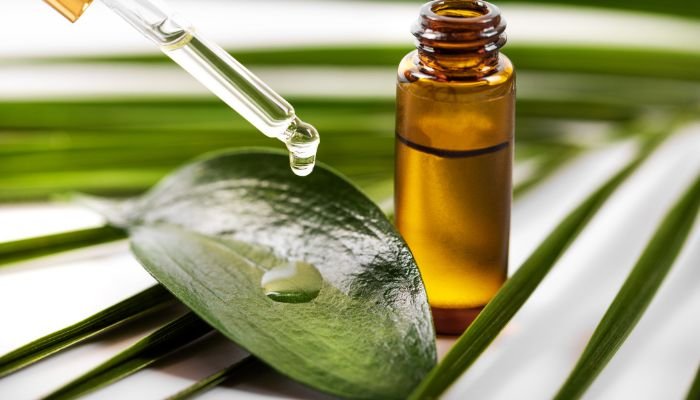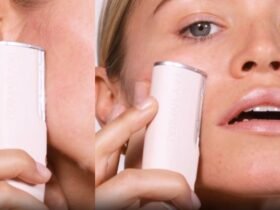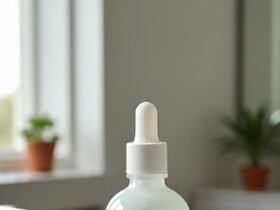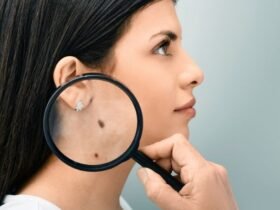You notice it while getting ready. A small bump on your neck that wasn’t there a few weeks ago. Soft, painless, but just visible enough to make you feel self-conscious. Skin tags are common, especially for women navigating hormonal changes, stress, or weight fluctuations. If you’ve searched for home remedies, you’ve probably seen one natural solution come up again and again: tea tree oil for skin tags.
It’s affordable, accessible, and plant-based. But does it actually work? Or is it just another wellness trend that sounds promising but underdelivers?
Why Tea Tree Oil Became a Popular Skin Tag Remedy
Tea tree oil comes from the leaves of the Melaleuca alternifolia tree and has long been praised for its antibacterial and anti-inflammatory benefits. It’s been used to treat acne, scalp irritation, insect bites, and minor wounds. So it’s no surprise that many people have started using it as a DIY treatment for skin tags.
The idea is simple. Because tea tree oil is known to dry out the skin, it may help shrink skin tags by dehydrating the tissue. Applied consistently, the tag might begin to darken, shrivel, and fall off naturally without causing pain or bleeding. That’s the theory.
And for some women, it works. They apply diluted tea tree oil to the tag once or twice a day with a cotton swab, cover it with a bandage, and wait. Over a few days or weeks, the tag fades and disappears. But results aren’t always consistent. Others try the same method and see no change at all.
There’s a reason for this. Not all skin tags respond the same way. Factors like your skin sensitivity, the size and thickness of the tag, and even where it’s located can affect how your body reacts. There’s also the question of quality. Pure, therapeutic-grade tea tree oil has the highest chance of being effective. Diluted, synthetic versions might do nothing or worse, irritate the skin.
And that’s the biggest concern. Tea tree oil is natural, but that doesn’t mean it’s risk-free. On sensitive skin, it can cause redness, burning, peeling, or allergic reactions. If your skin is dry, reactive, or compromised in any way, applying essential oils without proper dilution can backfire quickly.
That’s why dermatologists advise caution. While using tea tree oil on a small tag in a non-sensitive area might be harmless for most, it’s important to do a patch test first. And you should never apply it to broken skin, eyelids, or genital areas. These areas are too delicate and could react badly even to a small amount of essential oil.
So where does that leave you?
If you’re hoping to avoid harsh treatments like freezing or cutting, tea tree oil might feel like a gentle, empowering option. And in many ways, it can be. But it requires consistency, patience, and realistic expectations. It’s not a guaranteed fix. It’s a possible option. A quiet alternative that might work with time and care.
And if it doesn’t? That’s okay too. It doesn’t mean you’ve failed or done something wrong. It just means your skin is asking for something different. That could be professional removal, better metabolic balance, or simply kinder fabrics and less friction.
Whatever path you choose, remember this. Skin tags don’t define your beauty. They don’t lessen your worth. If you’re exploring tea tree oil for skin tags, do it as an act of care, not desperation. Do it because you’re learning to listen to your body and treat it gently.
And whether the tag falls off or stays right where it is, your skin is still yours to own, care for, and embrace.















Leave a Reply
View Comments